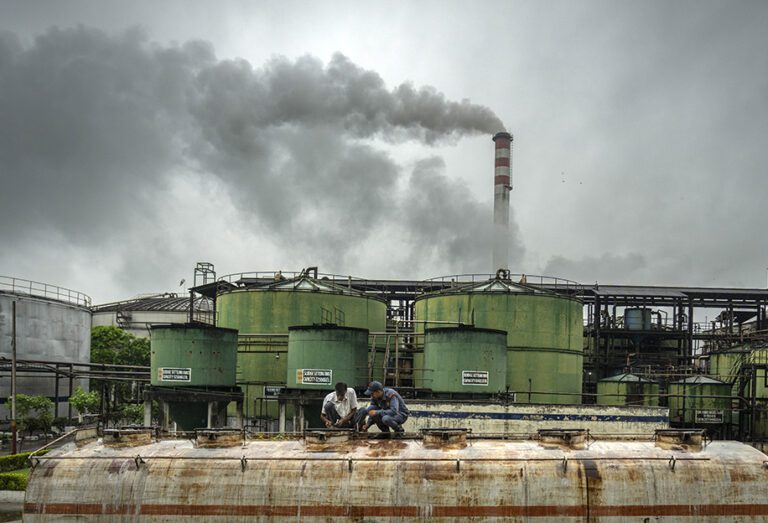BENGALURU, India — India, the current president of the Group of 20 (G20) industrialized and developing nations, has proposed a global biofuel alliance that seeks to accelerate the development of sustainable biofuels to support the global energy transition.
The alliance is likely to get an official announcement at the G20 summit that opens this week in New Delhi, and it’s expected that more than 15 countries will sign up to be part of the alliance.
The U.S., Canada and Brazil are among a few of the countries expected to join India in such an alliance.
What are biofuels?
Any fuel produced from agricultural produce or organic waste is a biofuel.
Humans have used biofuels since time immemorial — for example, burning wood and manure for cooking, heating and lighting.
They’ve gained popularity in recent decades for their potential to deliver cleaner energy than some other sources.
Biofuels are categorized based on their source, with each category known as a “generation.” First-generation biofuels are derived from food crops like corn and sugar cane, second generation from inedible vegetation and agricultural waste and third generation from algae.
Popular types of biofuels such as ethanol, biodiesel and biogas can be produced from any of these sources and are classified based on the source from which they are produced. For example, ethanol produced from farm-grown corn is classified as first-generation ethanol.
Are biofuels always a source of clean energy?
Not always.
It depends on how the biofuel is produced. A biofuel made from waste or inedible vegetation, with renewable energy to power the production, would have little or no greenhouse gas emissions, making it a clean fuel. But when crops are grown explicitly to produce biofuels — such as making ethanol from corn, soybeans, sugar cane or palm — all the fertilizers and fossil fuels needed to grow, cultivate and process the fuel give it a much larger carbon footprint.
“If you look at the full life cycle of producing biofuels, it’s many times not clean,” said Lydia Powell, an energy policy analyst at the New Delhi-based Observer Research Foundation. Powell has followed developments related to biofuels for over two decades.
The production of biofuels can also mean land that could have produced food is instead being used for energy. In addition, biofuels can add to the world’s deforestation when land is cleared for their production.
Powell pointed to Europe’s imports of palm oil from Indonesia and other East Asian countries to make biodiesel for cars and trucks. Those imports dropped sharply after European Union regulations banned the sale of palm oil and other commodities when they could be linked to deforestation.
“They were destroying natural forests to plant palm trees so you produce oil to export to Europe. When you destroy forests, you destroy large chunks of carbon sinks,” Powell said.
Those issues have clouded the picture of exactly how sustainable biofuels are and led to skepticism of them as a clean energy option.
What are biofuels used for?
In addition to powering passenger vehicles for transport, biofuels are used in the freight industry, fueling big rigs, cargo planes and ocean freighters.
Once biofuels are made, experts say, they offer advantages over pure fossil fuels by contributing little to no emissions at the tailpipe. The same can’t be said, however, of the gasoline and diesel with which the biofuels are blended.
But there’s a hope that the biofuels might completely replace fossil fuels in the future in aviation and in certain kinds of ships. And if the biofuels were derived from organic waste and inedible crops grown on wasteland — not on land reserved for food production, or on deforested land — it would be cleaner.
“They are one option among a larger set of solutions,” said Jane O’Malley of International Council on Clean Transportation, a Washington-based independent nonprofit.
O’Malley, whose research includes fuel life cycles and exhaust emissions, said the key is to use the right kind of biofuel for the right purpose. O’Malley said it’s essential for countries using biofuels for transportation to move as quickly as possible to produce them with little or no emissions.
Experts say biofuels can also contribute to employment and energy security, especially if the crops used to produce them are locally grown.
By Sibi Arasu, The Associated Press
The Associated Press is an independent global news organization dedicated to factual reporting. Founded in 1846, AP today remains the most trusted source of fast, accurate, unbiased news in all formats and the essential provider of the technology and services vital to the news business. The Trucker Media Group is subscriber of The Associated Press has been granted the license to use this content on TheTrucker.com and The Trucker newspaper in accordance with its Content License Agreement with The Associated Press.















